In our previous blog post we had discussed about What is Self Relationship in Salesforce.In these blog post we discuss about What is Junction Relationship in Salesforce
Contents
- 1 Introduction to Junction Relationship in Salesforce:-
- 2 Definition and Purpose of Junction Relationship:-
- 3 Common Use Cases for Junction Relationships:-
- 4 Importance of Junction Relationships in Salesforce:-
- 5 Creating Junction Relationships in Salesforce:-
- 6 Reporting and Dashboards with Junction Relationships:-
- 7 Best Practices for Implementing Junction Relationships in Salesforce:-
- 8 Summary:-
- 9 FAQs
What is Junction Relationship in Salesforce
Introduction to Junction Relationship in Salesforce:-
In Salesforce, a junction relationship plays a crucial role in managing complex data structures and facilitating many-to-many relationships. Let’s dive into the definition, purpose, and importance of junction relationships in Salesforce.
Definition and Purpose of Junction Relationship:-
A junction relationship in Salesforce refers to the connection between two objects through a third, intermediary object known as a junction object. This type of relationship allows for many-to-many associations, enabling more flexible data modeling.
Common Use Cases for Junction Relationships:-
Junction relationships are commonly used in scenarios where multiple records from one object can be related to multiple records in another object. For example, in a CRM system, a junction object can be used to link contacts to multiple accounts and vice versa.
Importance of Junction Relationships in Salesforce:-
Junction relationships are essential for maintaining data integrity and simplifying complex data models. They provide a structured way to handle many-to-many relationships and streamline data management processes.
Creating Junction Relationships in Salesforce:-
To set up junction relationships effectively in Salesforce, follow these steps:
How to Define Junction Objects:-
- Identify the objects that need to be connected through a junction object.
- Create a new custom object to serve as the junction object.
- Define custom fields on the junction object to establish relationships with the connected objects.
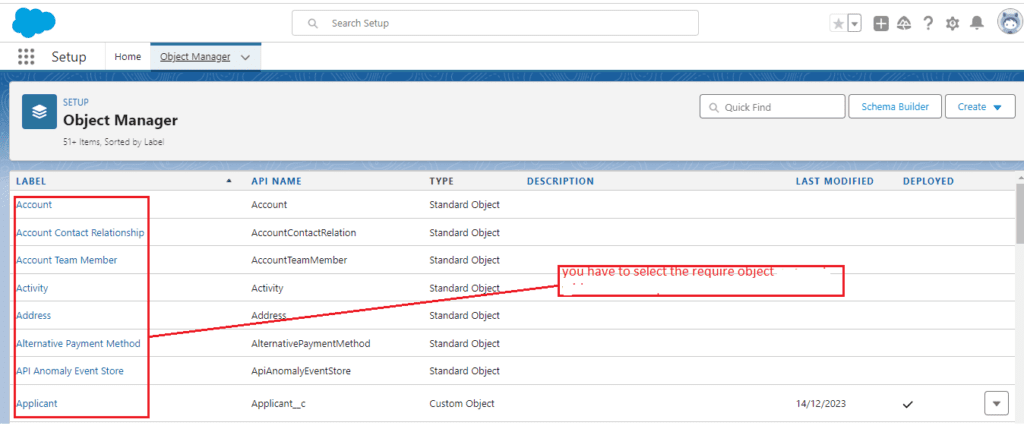

In Salesforce, a junction relationship is a many-to-many relationship that connects three objects together. It’s implemented using two master-detail relationships where one object serves as a “junction” between the other two. This enables more complex data modeling scenarios, such as representing relationships between objects like Accounts, Contacts, and Products in a comprehensive manner. Junction relationships are particularly useful for organizing and analyzing data across multiple entities in Salesforce.
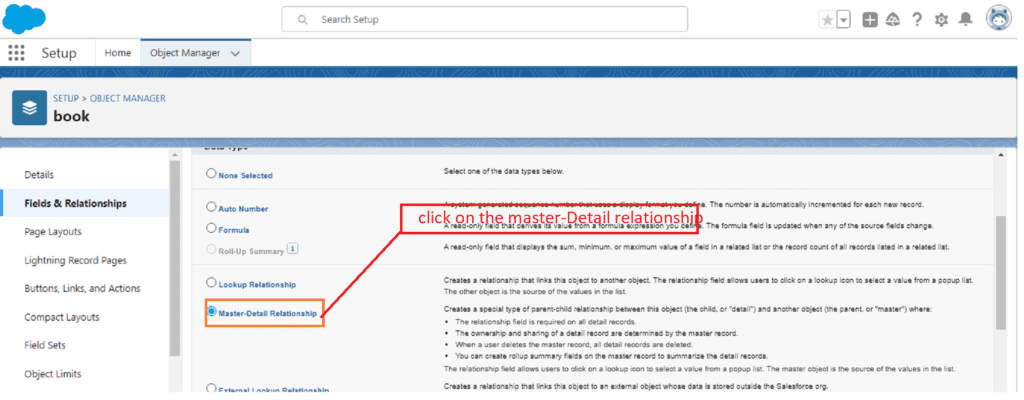
you have select required object, selected object will be invisible object.
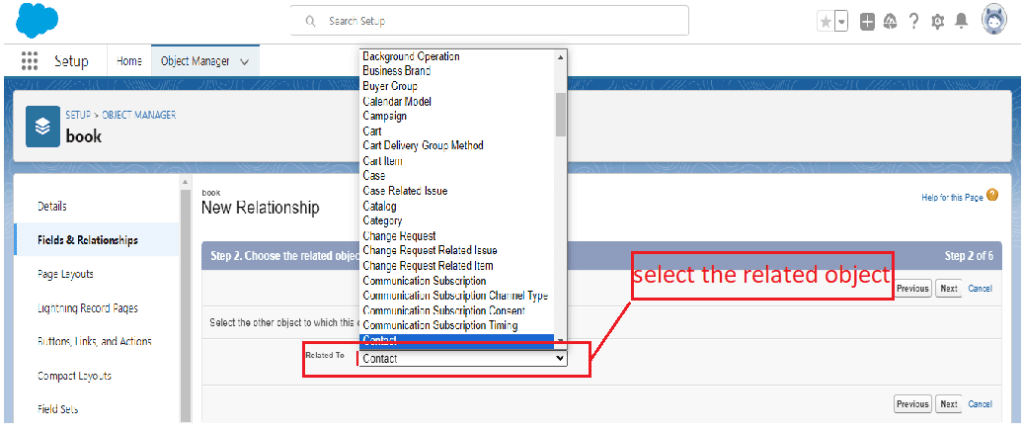
the fallowing figures uncheck all the check boxes
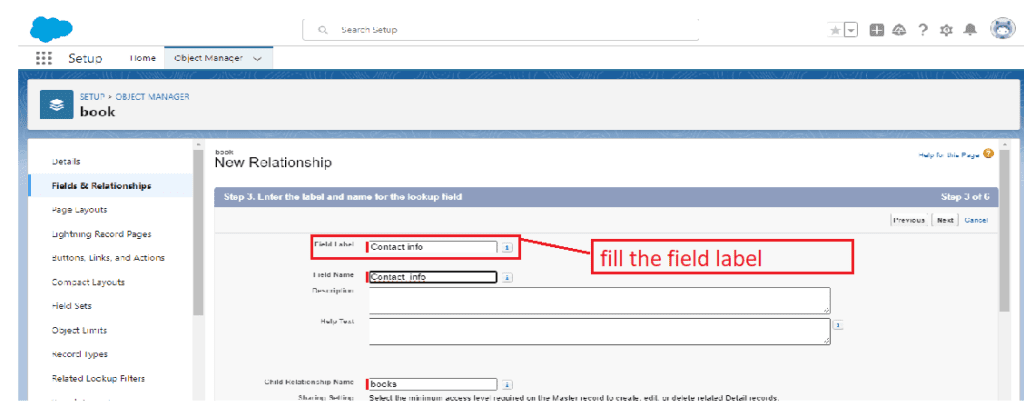
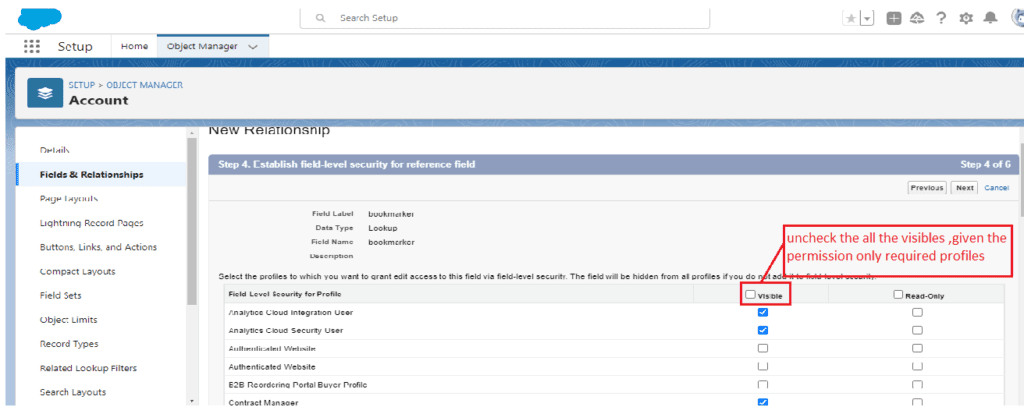
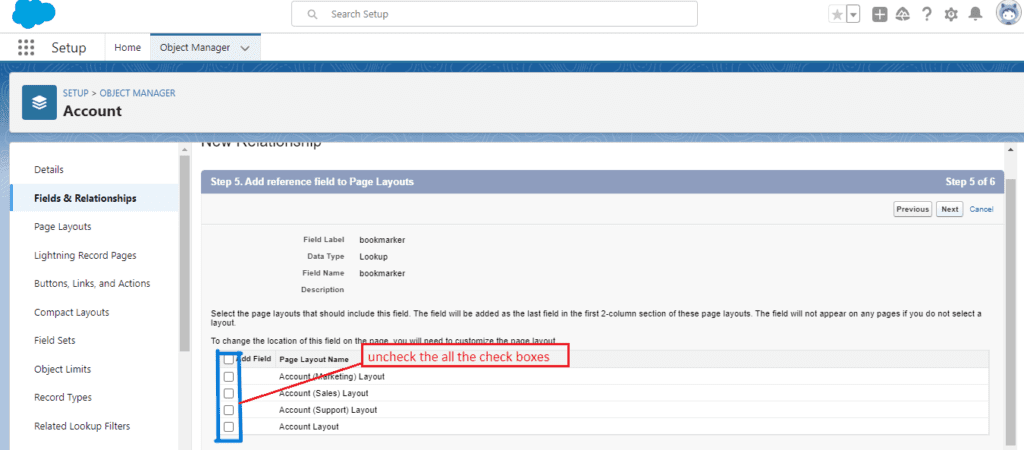
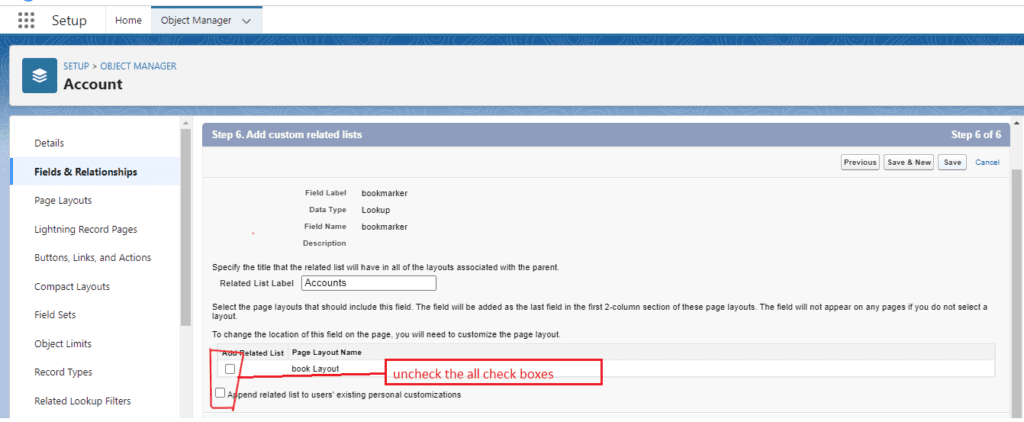
you want to know more about the What is Junction Relationship in Salesforce click here
Example:-
A junction relationship in Salesforce connects three objects together to represent many-to-many relationships. For example, in a University system, a junction object named “Course Enrollment” can connect “Student” and “Course” objects, allowing a student to enroll in multiple courses and a course to have multiple students. This facilitates more flexible data modeling and reporting.
Setting Up Junction Objects in Salesforce:-
- Configure the fields on the junction object to capture the necessary data.
- Establish lookup relationships between the junction object and the connected objects.
- Customize page layouts and related lists to display relevant information in Salesforce.
Establishing Relationships with Junction Objects:-
- Create custom relationship fields on the connected objects to link them to the junction object.
- Use junction objects in record detail pages to navigate between related records efficiently.
- Ensure proper access controls and sharing settings for junction objects to maintain data security.
Utilizing Junction Relationships for Data Management:-
Junction relationships offer significant benefits for managing data effectively in Salesforce. Here’s how they can be leveraged:
Managing Many-to-Many Relationships with Junction Objects:-
- Use junction objects to handle complex relationships between multiple records without creating redundant data.
- Utilize junction relationships to streamline data entry and improve data accuracy across different objects.
Handling Complex Data Models with Junction Relationships:-
- Simplify data models by creating junction relationships to bridge relationships between various objects.
- Reduce the complexity of data structures and improve overall data organization with junction objects.
Enhancing Data Integrity Through Junction Relationships:-
- Ensure data consistency by enforcing referential integrity constraints using junction relationships.
- Enhance data quality and minimize errors by centralizing related data through junction objects.
Reporting and Dashboards with Junction Relationships:-
Junction relationships can have a significant impact on reporting and analytics in Salesforce. Here’s how they can be used effectively
Creating Reports Using Junction Objects:-
- Generate custom reports that reflect many-to-many relationships by utilizing junction objects in report criteria.
- Analyze cross-object data efficiently and gain valuable insights into complex data structures.
Visualizing Data Through Dashboards with Junction Relationships:-
- Build interactive dashboards that showcase data from connected objects through junction relationships.
- Create dynamic charts and graphs that highlight trends and patterns in the data related to junction objects.
Analyzing Data Trends with Junction Relationships:-
- Use junction relationships to track data trends over time and identify patterns in customer interactions or transactions.
- Gain actionable insights from data analytics by leveraging the power of junction relationships in Salesforce.
Best Practices for Implementing Junction Relationships in Salesforce:-
To make the most of junction relationships in Salesforce, consider these best practices:
Understanding Data Modeling Before Creating Junction Objects:-
- Plan your data model carefully to identify the need for junction relationships in Salesforce.
- Ensure that junction objects align with the overall data architecture and support business requirements effectively.
Consistent Naming Conventions for Junction Objects:-
- Establish a standardized naming convention for junction objects and fields to maintain clarity and consistency.
- Document the purpose and relationships of junction objects to ensure seamless collaboration and understanding within the organization.
Regular Maintenance and Optimization of Junction Relationships:-
- Conduct regular audits of junction objects to identify any inconsistencies or redundancies in data.
- Optimize junction relationships by streamlining processes, updating field mappings, and improving data flows as needed.
Summary:-
In conclusion, junction relationships play a crucial role in Salesforce data management by facilitating many-to-many relationships, simplifying complex data models, and enabling effective reporting and analysis. By following best practices and utilizing junction relationships effectively, businesses can enhance their Salesforce experience and improve overall data integrity.
FAQs
1. What is a Junction Relationship in Salesforce?
A Junction Relationship in Salesforce is a way to establish a many-to-many relationship between two objects. This is achieved by using a third object, known as a junction object, which has two master-detail relationships linking to the two objects you want to relate.
2. How do you create a Junction Relationship in Salesforce?
To create a Junction Relationship, first create a junction object. Then, create two master-detail relationships from this junction object to the two objects you want to relate. This setup enables the many-to-many relationship.
3. Can a Junction Relationship include custom objects?
Yes, a Junction Relationship can include custom objects. You can create master-detail relationships between custom objects or between custom and standard objects to establish the many-to-many relationship.
4. What are some use cases for Junction Relationships in Salesforce?
Junction Relationships are useful in scenarios like associating students with multiple courses, tagging products with multiple categories, or linking projects with multiple team members.
5. Are there any limitations to using Junction Relationships in Salesforce?
One limitation is that each junction object can only have two master-detail relationships. Additionally, if either of the parent records is deleted, the corresponding junction object records are also deleted. This cascading delete behavior needs careful consideration when designing your data model.

The content is good and informative